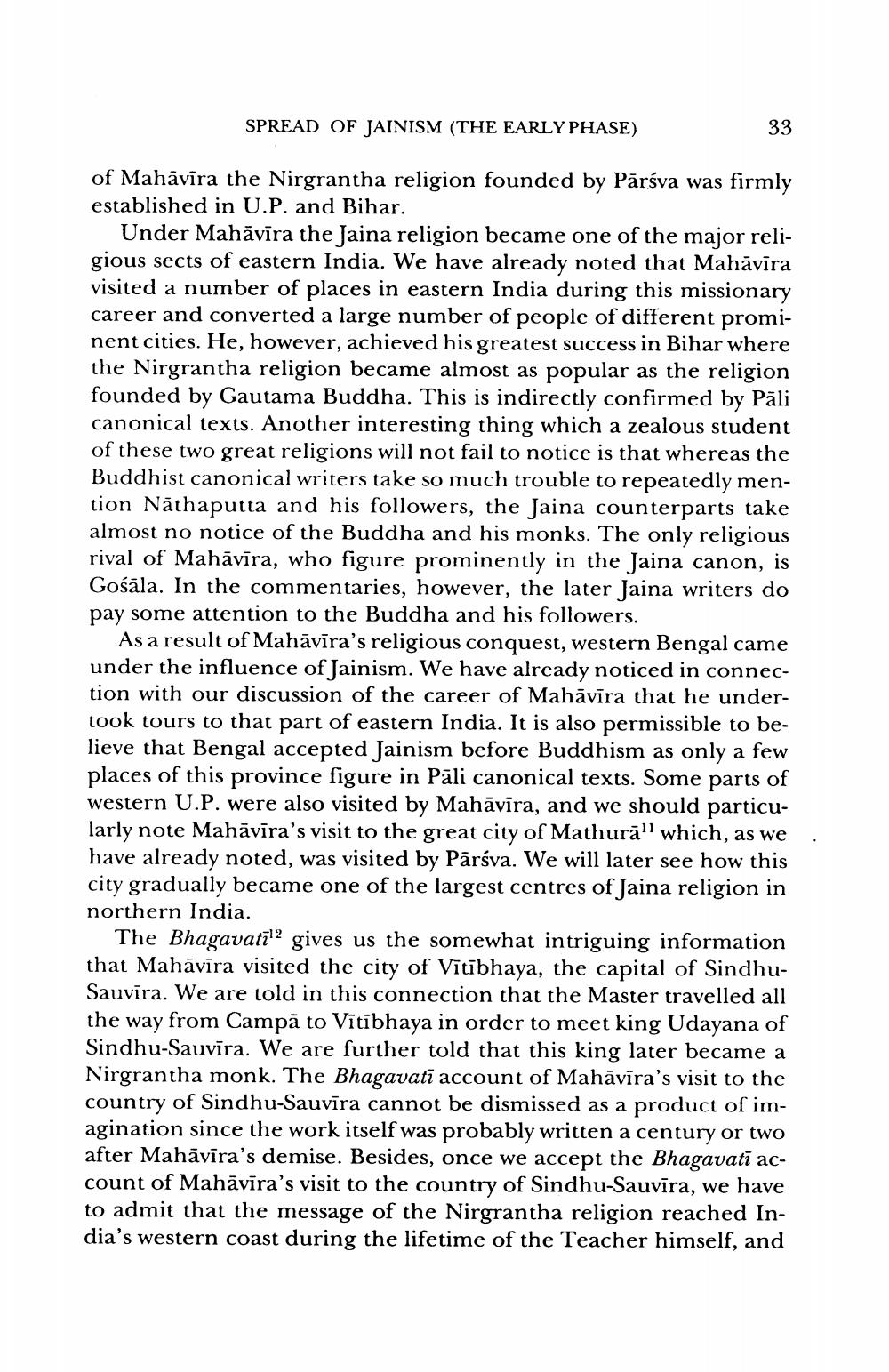________________
SPREAD OF JAINISM (THE EARLY PHASE)
33
of Mahāvīra the Nirgrantha religion founded by Pārśva was firmly established in U.P. and Bihar.
Under Mahāvīra the Jaina religion became one of the major relious sects of eastern India. We have already noted that Mahāvira visited a number of places in eastern India during this missionary career and converted a large number of people of different prominent cities. He, however, achieved his greatest success in Bihar where the Nirgrantha religion became almost as popular as the religion founded by Gautama Buddha. This is indirectly confirmed by Pāli canonical texts. Another interesting thing which a zealous student of these two great religions will not fail to notice is that whereas the Buddhist canonical writers take so much trouble to repeatedly mention Nāthaputta and his followers, the Jaina counterparts take almost no notice of the Buddha and his monks. The only religious rival of Mahāvīra, who figure prominently in the Jaina canon, is Gośāla. In the commentaries, however, the later Jaina writers do pay some attention to the Buddha and his followers.
As a result of Mahāvīra's religious conquest, western Bengal came under the influence of Jainism. We have already noticed in connection with our discussion of the career of Mahāvīra that he undertook tours to that part of eastern India. It is also permissible to believe that Bengal accepted Jainism before Buddhism as only a few places of this province figure in Pāli canonical texts. Some parts of western U.P. were also visited by Mahāvīra, and we should particularly note Mahāvīra's visit to the great city of Mathurā" which, as we have already noted, was visited by Pārsva. We will later see how this city gradually became one of the largest centres of Jaina religion in northern India.
The Bhagavati!? gives us the somewhat intriguing information that Mahāvīra visited the city of Vītībhaya, the capital of SindhuSauvīra. We are told in this connection that the Master travelled all the way from Campā to Vītībhaya in order to meet king Udayana of Sindhu-Sauvīra. We are further told that this king later became a Nirgrantha monk. The Bhagavati account of Mahāvīra's visit to the country of Sindhu-Sauvīra cannot be dismissed as a product of imagination since the work itself was probably written a century or two after Mahāvīra's demise. Besides, once we accept the Bhagavati account of Mahāvīra's visit to the country of Sindhu-Sauvīra, we have to admit that the message of the Nirgrantha religion reached India's western coast during the lifetime of the Teacher himself, and




